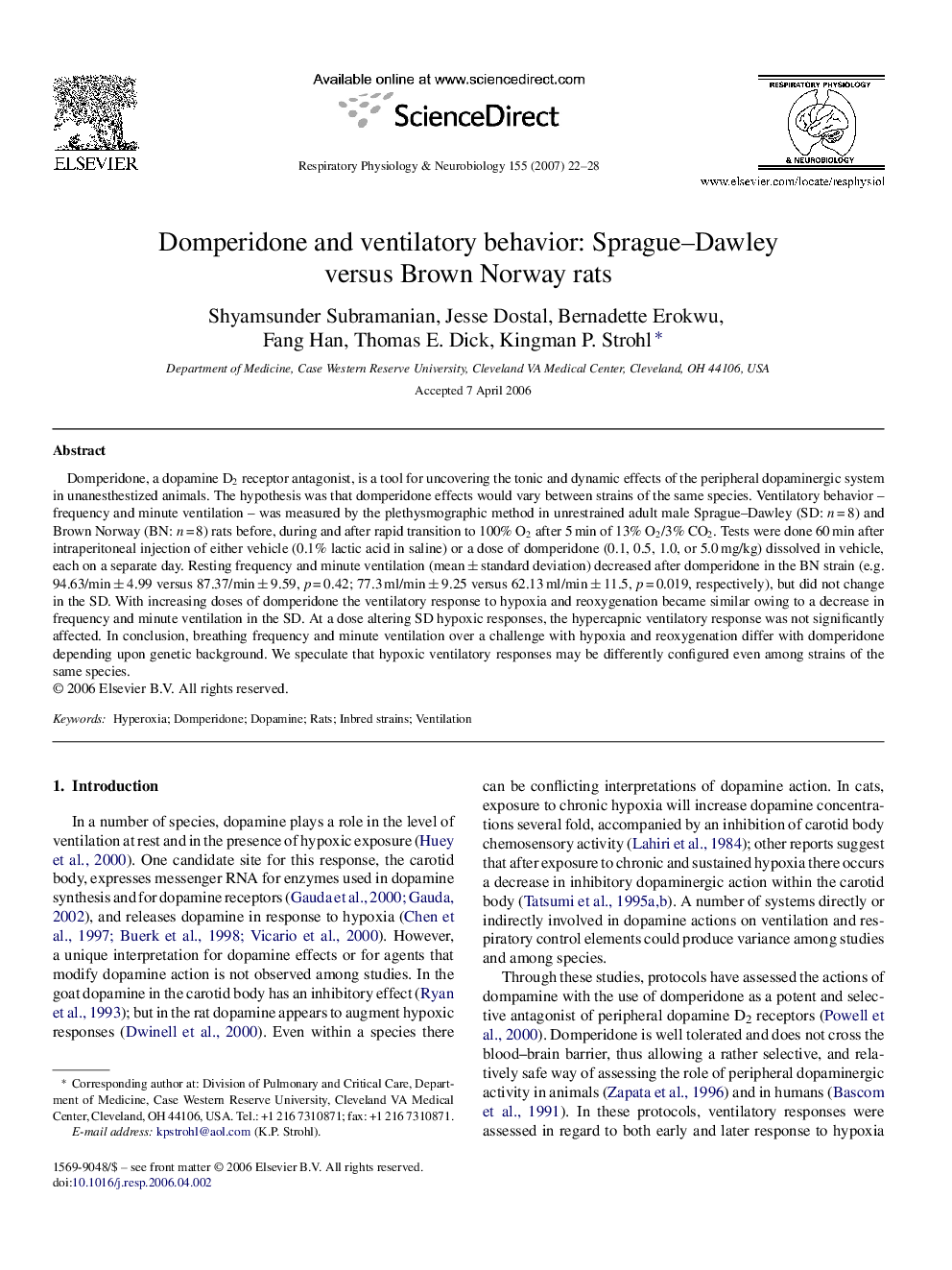| Article ID | Journal | Published Year | Pages | File Type |
|---|---|---|---|---|
| 2848552 | Respiratory Physiology & Neurobiology | 2007 | 7 Pages |
Domperidone, a dopamine D2 receptor antagonist, is a tool for uncovering the tonic and dynamic effects of the peripheral dopaminergic system in unanesthestized animals. The hypothesis was that domperidone effects would vary between strains of the same species. Ventilatory behavior – frequency and minute ventilation – was measured by the plethysmographic method in unrestrained adult male Sprague–Dawley (SD: n = 8) and Brown Norway (BN: n = 8) rats before, during and after rapid transition to 100% O2 after 5 min of 13% O2/3% CO2. Tests were done 60 min after intraperitoneal injection of either vehicle (0.1% lactic acid in saline) or a dose of domperidone (0.1, 0.5, 1.0, or 5.0 mg/kg) dissolved in vehicle, each on a separate day. Resting frequency and minute ventilation (mean ± standard deviation) decreased after domperidone in the BN strain (e.g. 94.63/min ± 4.99 versus 87.37/min ± 9.59, p = 0.42; 77.3 ml/min ± 9.25 versus 62.13 ml/min ± 11.5, p = 0.019, respectively), but did not change in the SD. With increasing doses of domperidone the ventilatory response to hypoxia and reoxygenation became similar owing to a decrease in frequency and minute ventilation in the SD. At a dose altering SD hypoxic responses, the hypercapnic ventilatory response was not significantly affected. In conclusion, breathing frequency and minute ventilation over a challenge with hypoxia and reoxygenation differ with domperidone depending upon genetic background. We speculate that hypoxic ventilatory responses may be differently configured even among strains of the same species.
